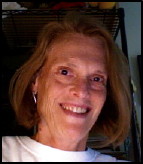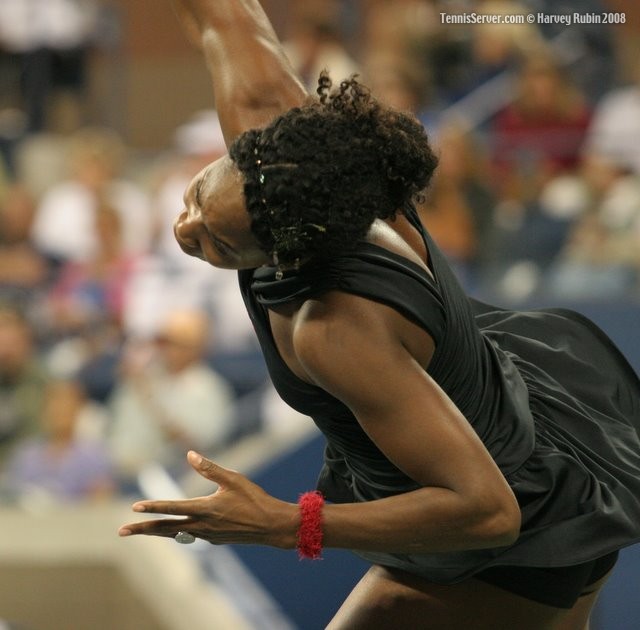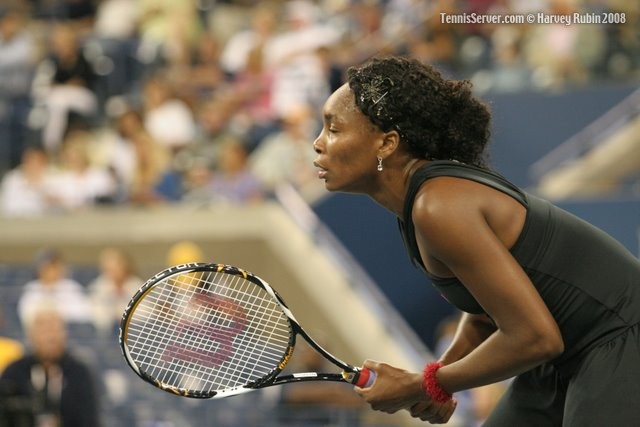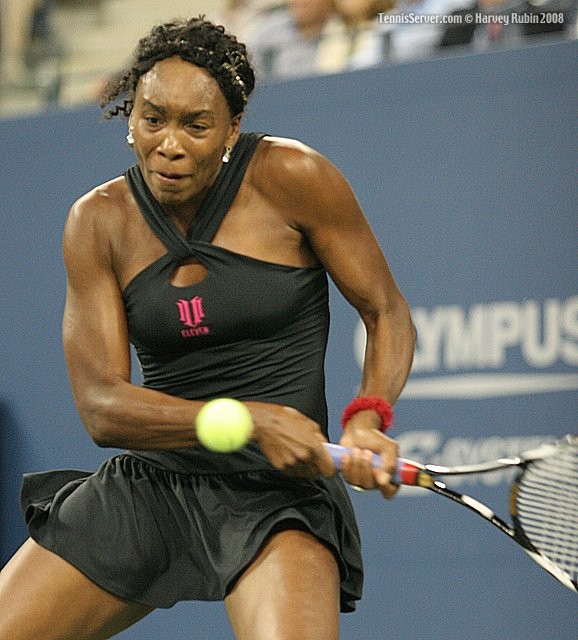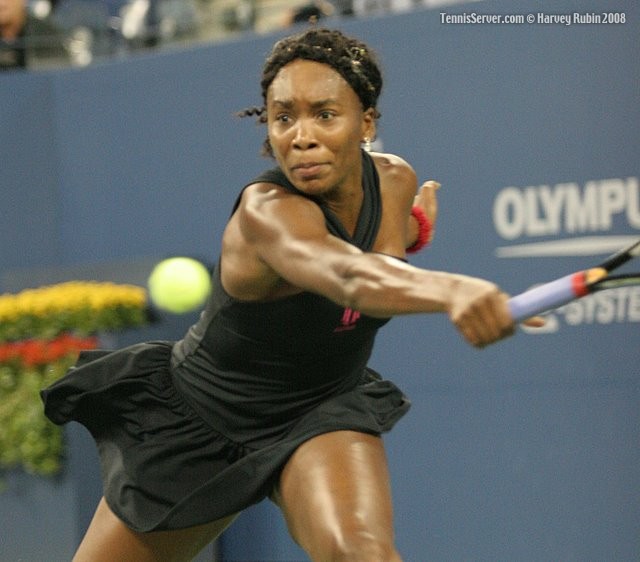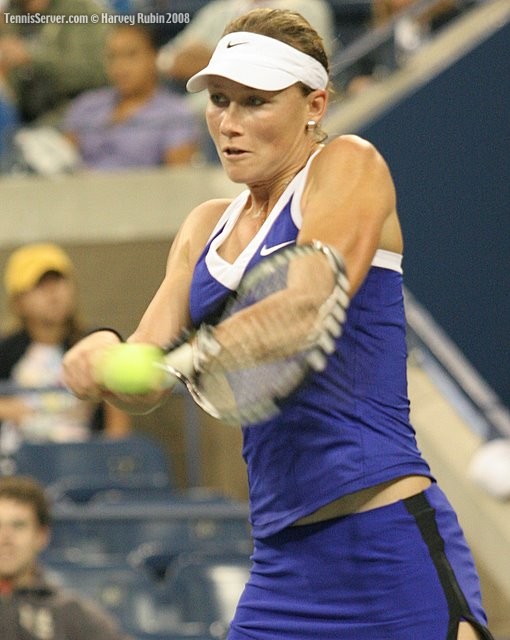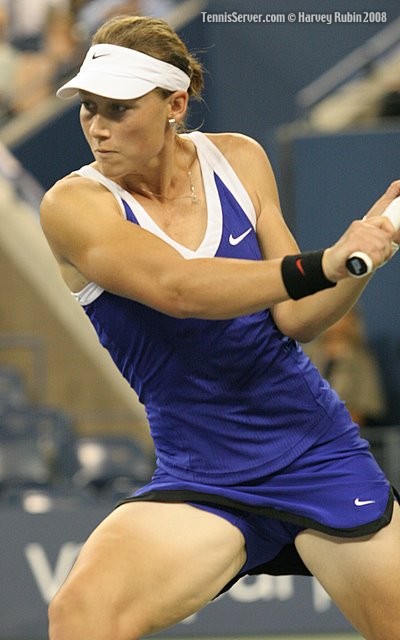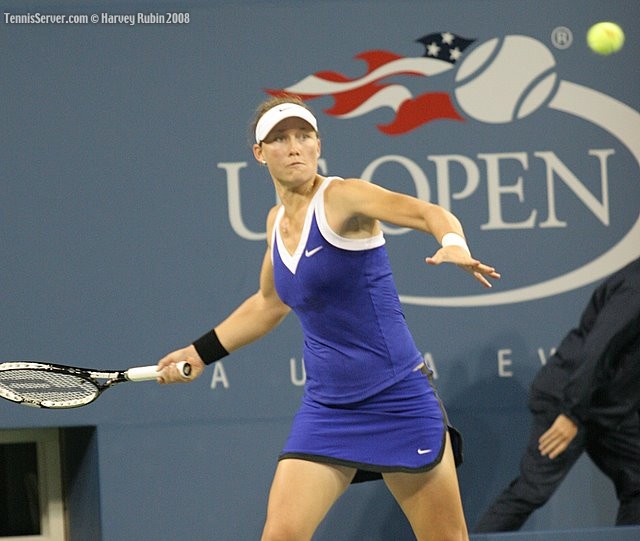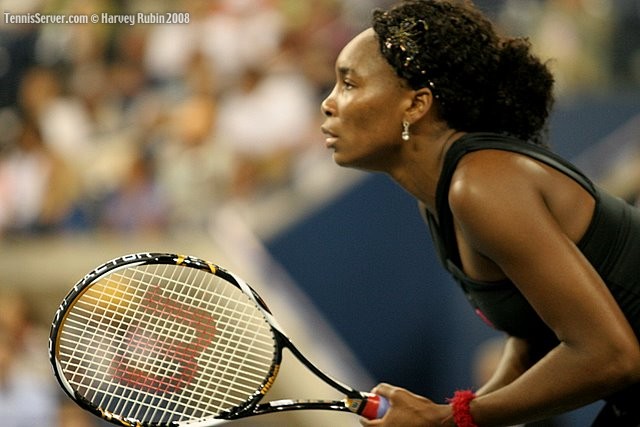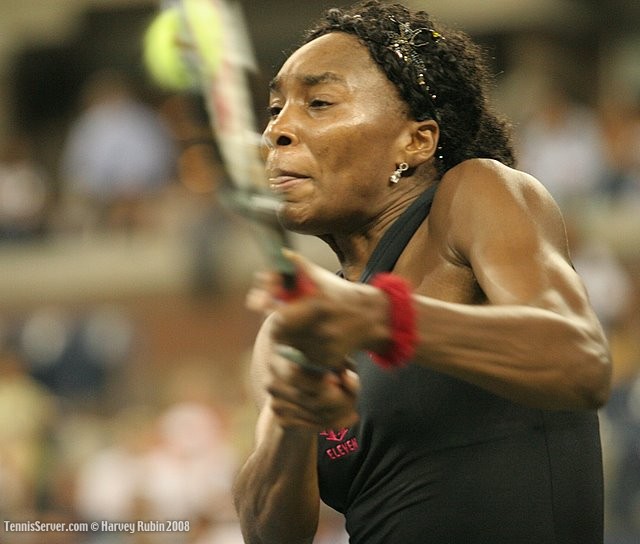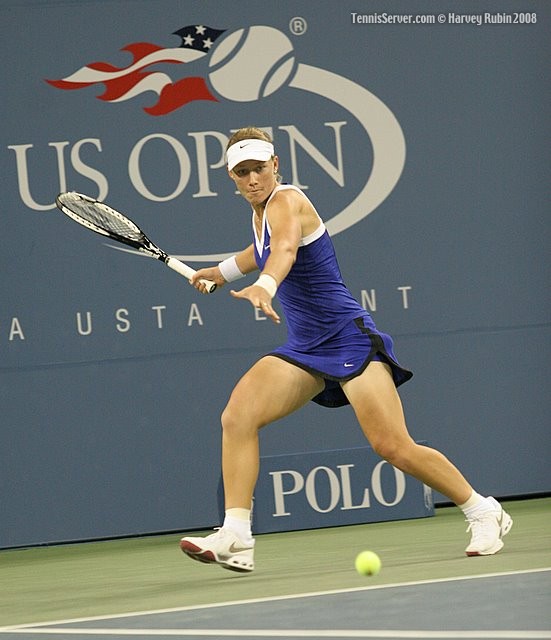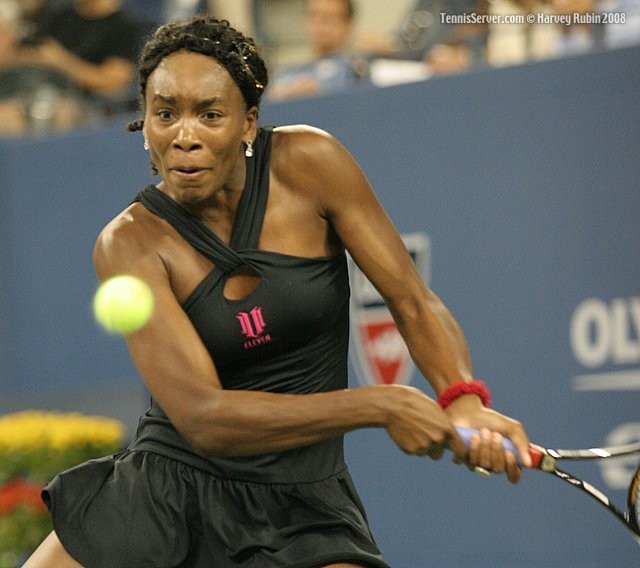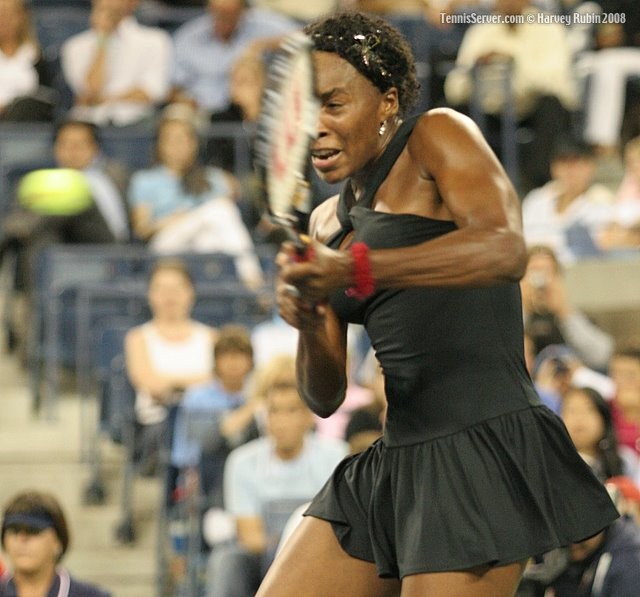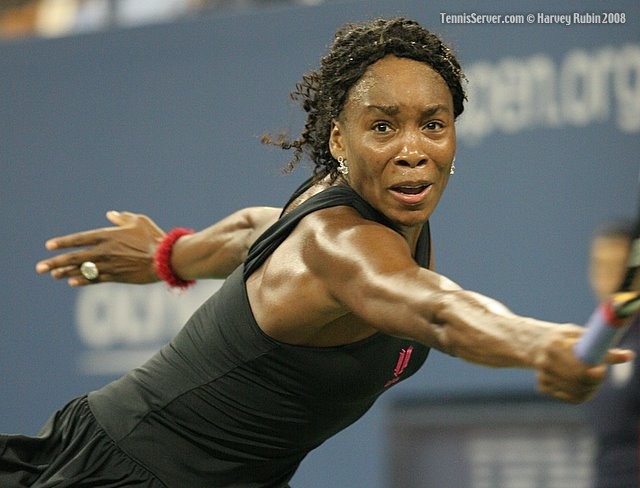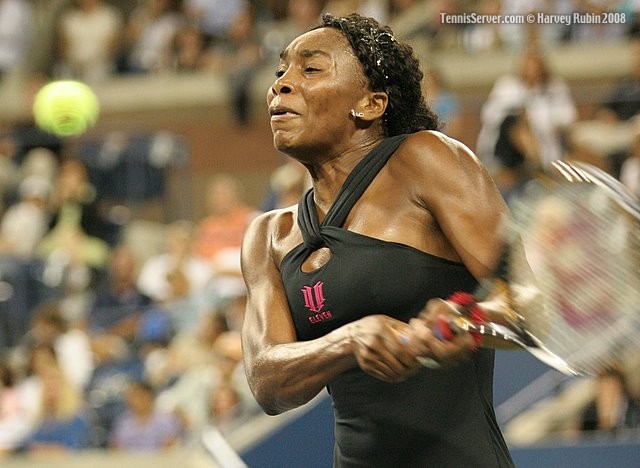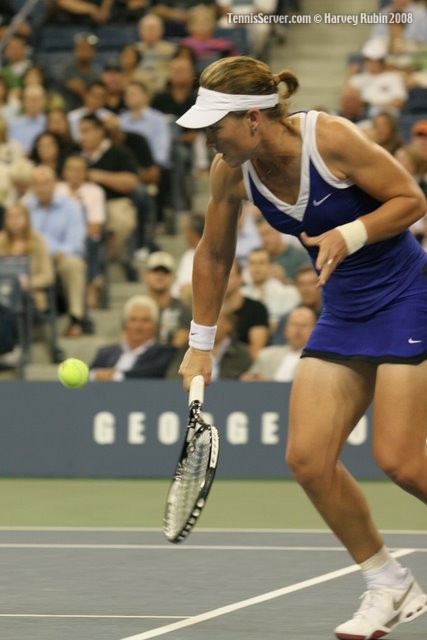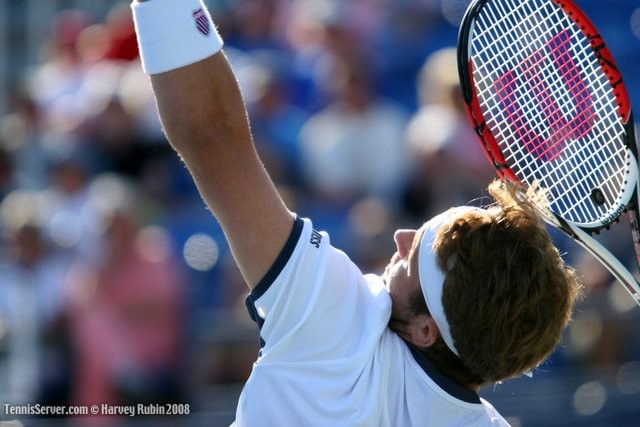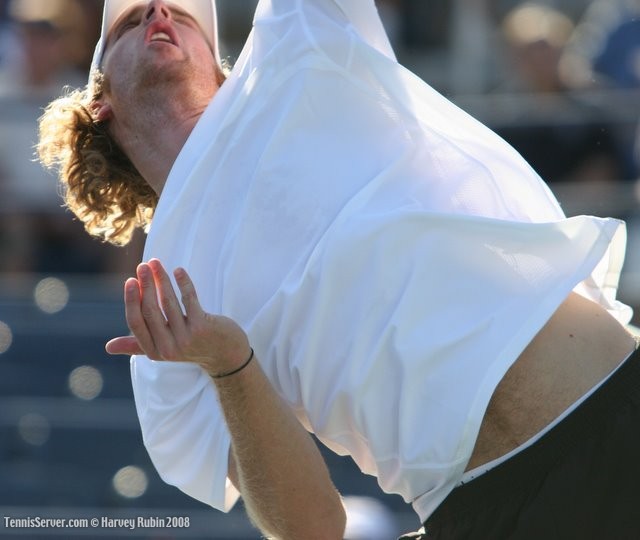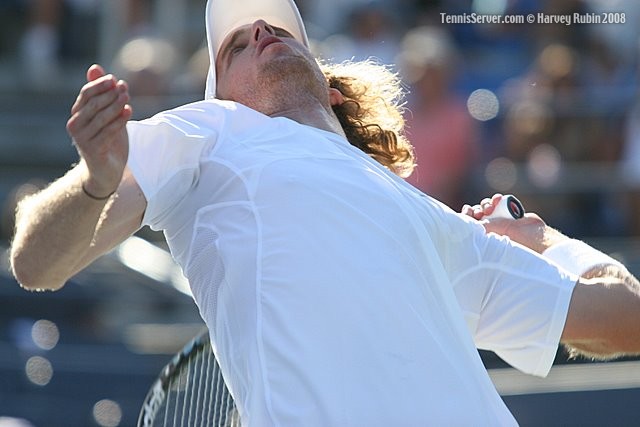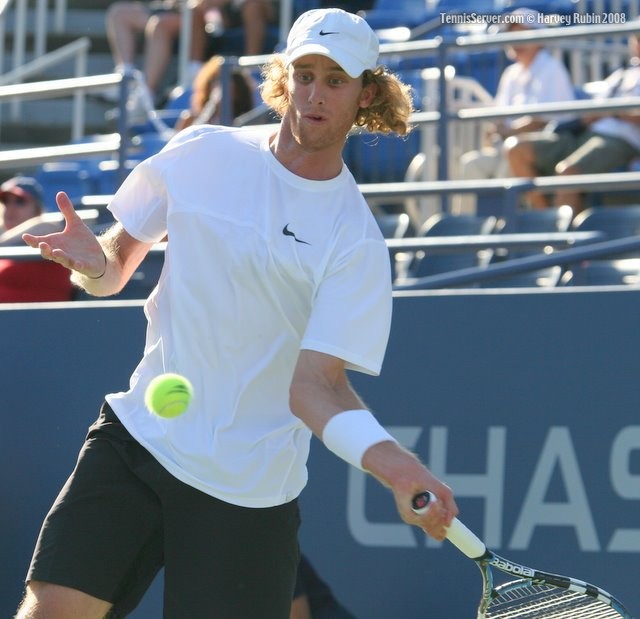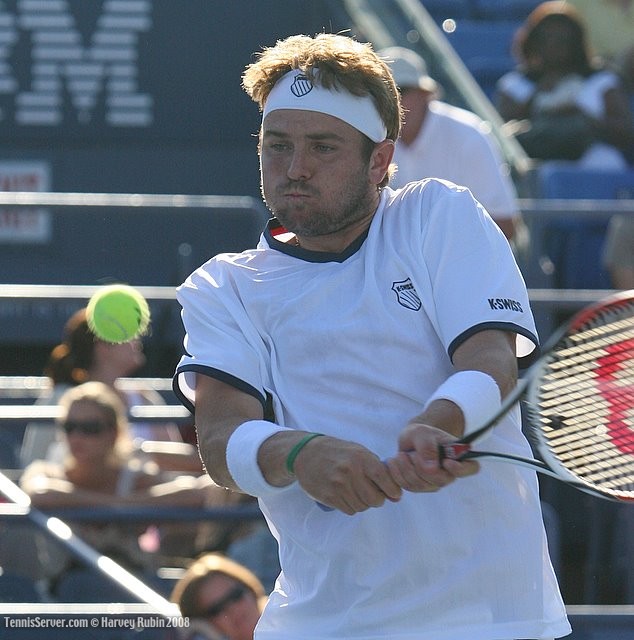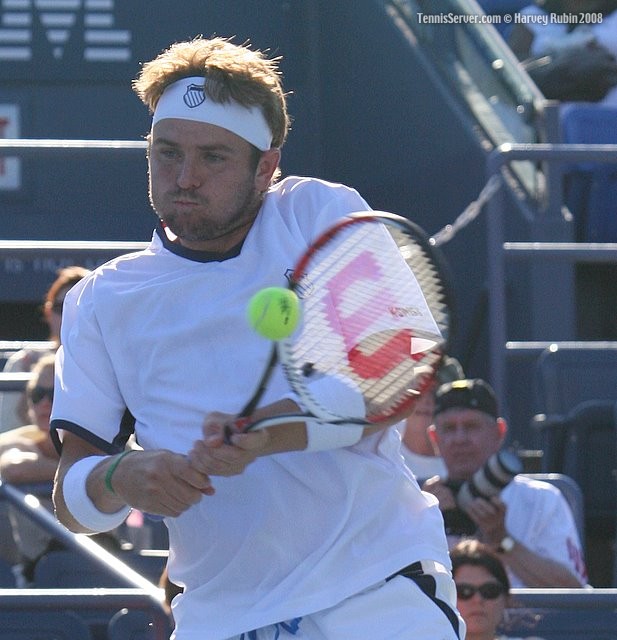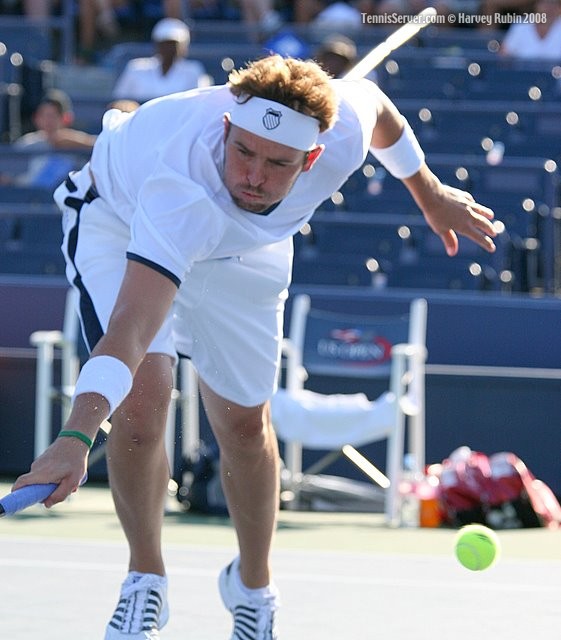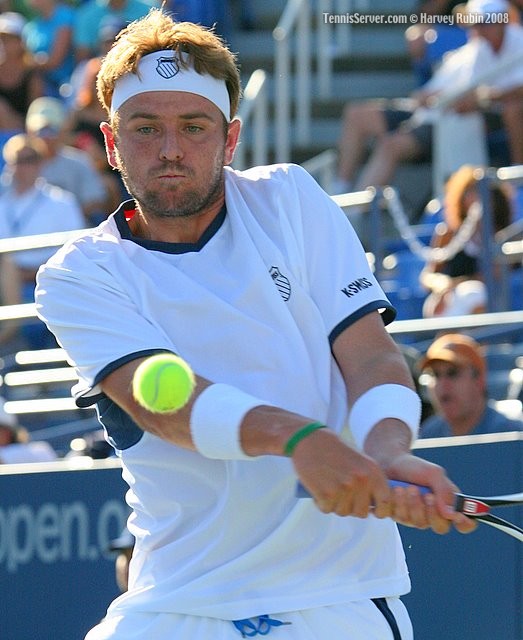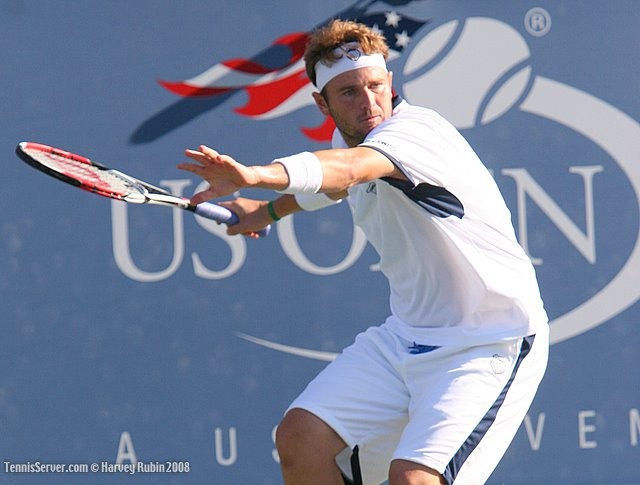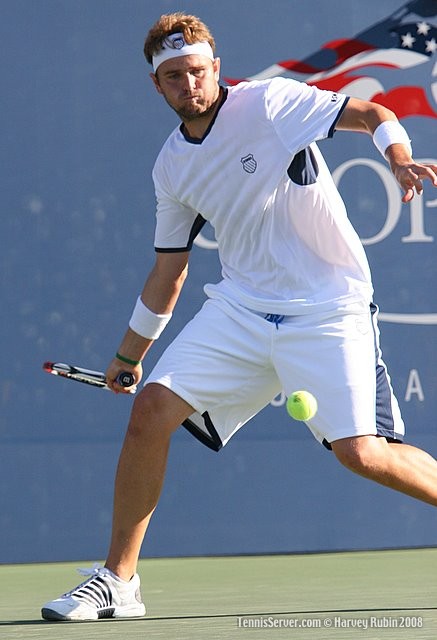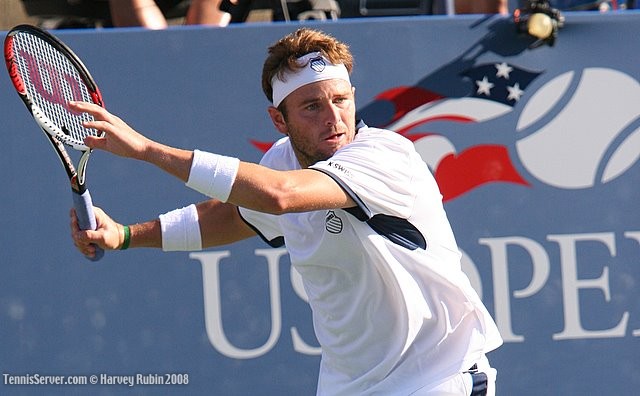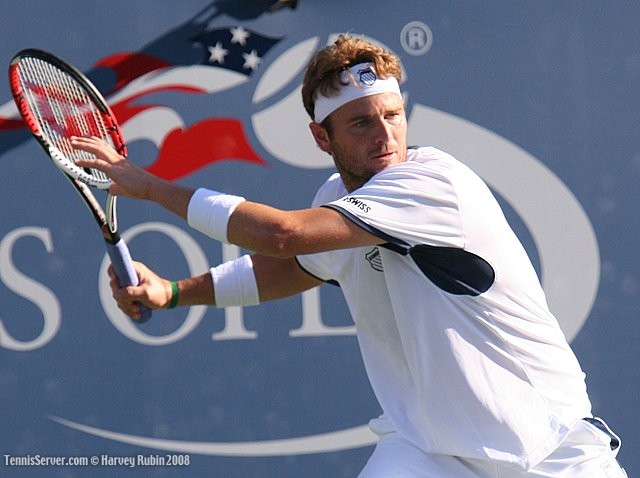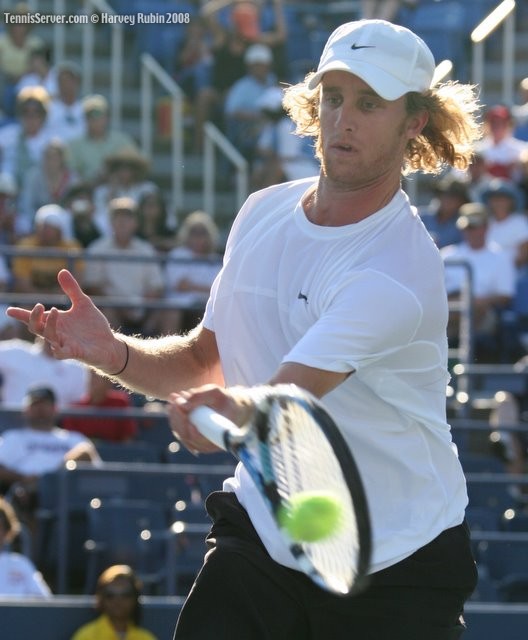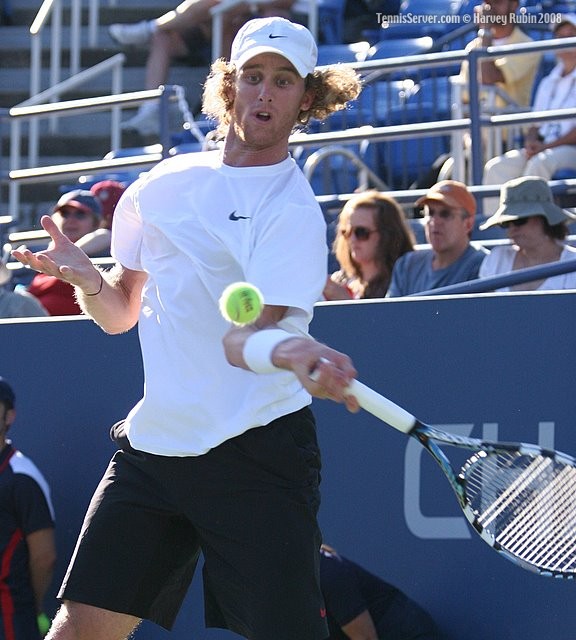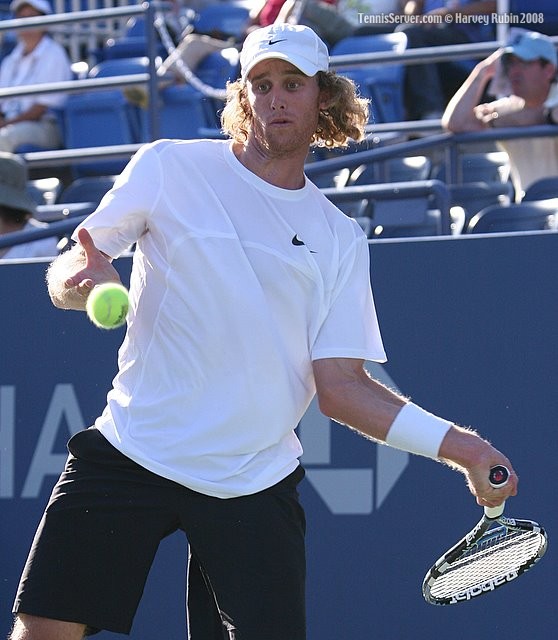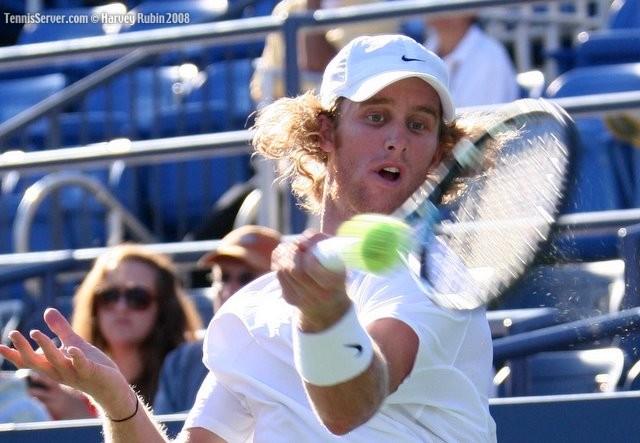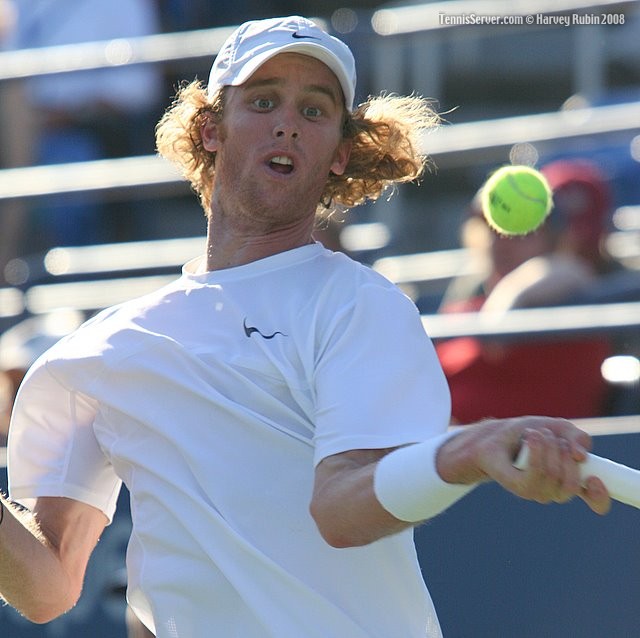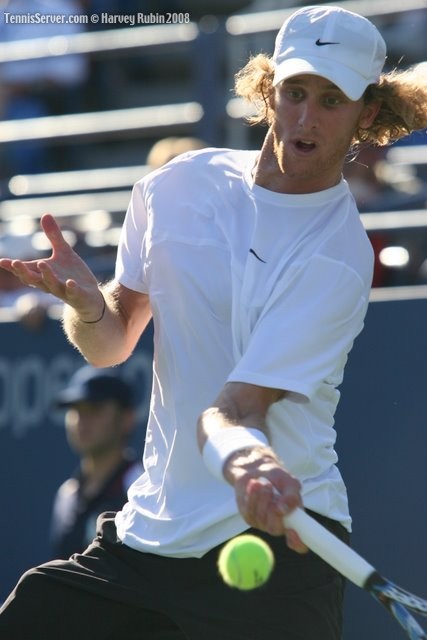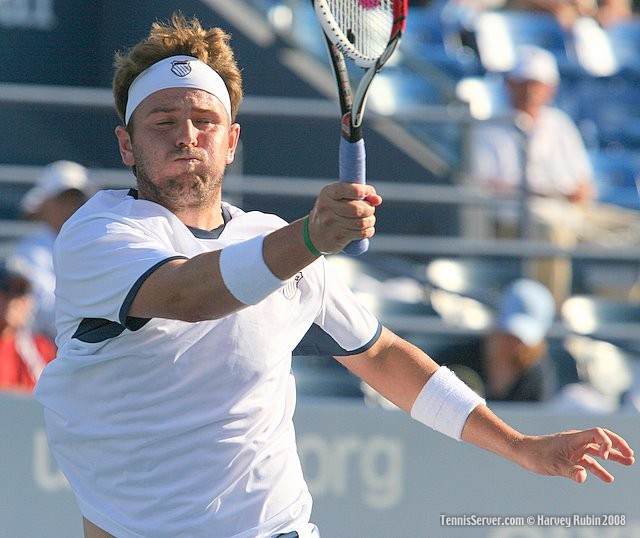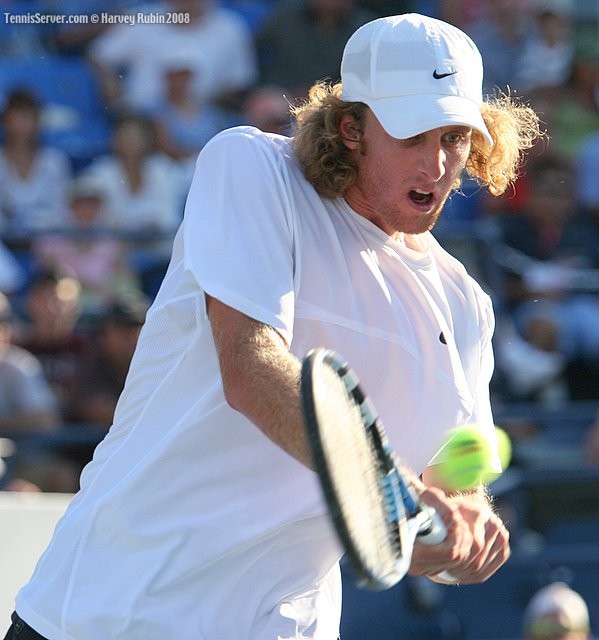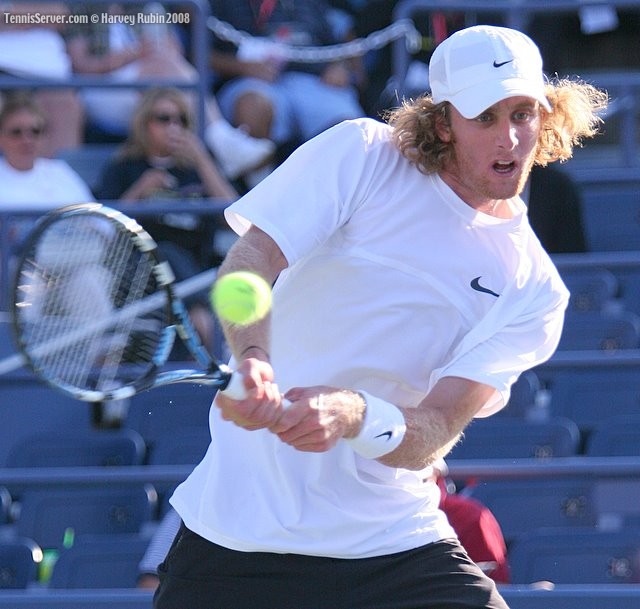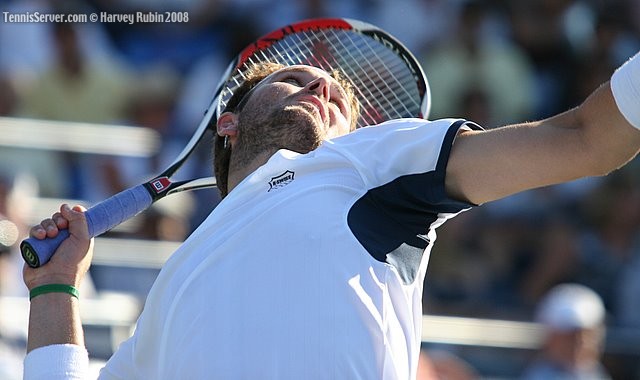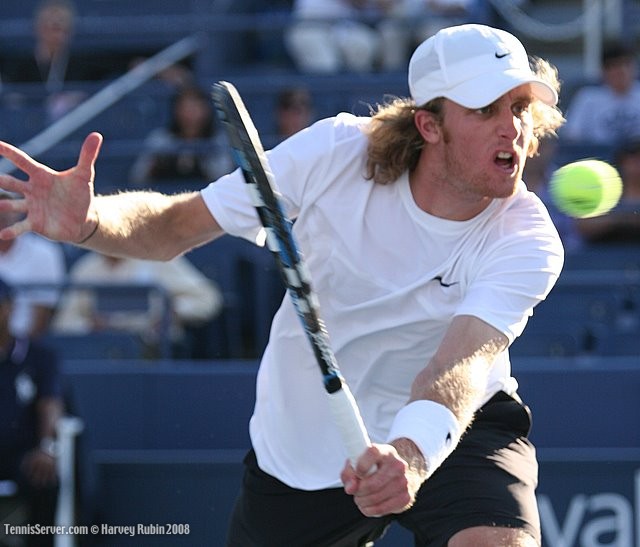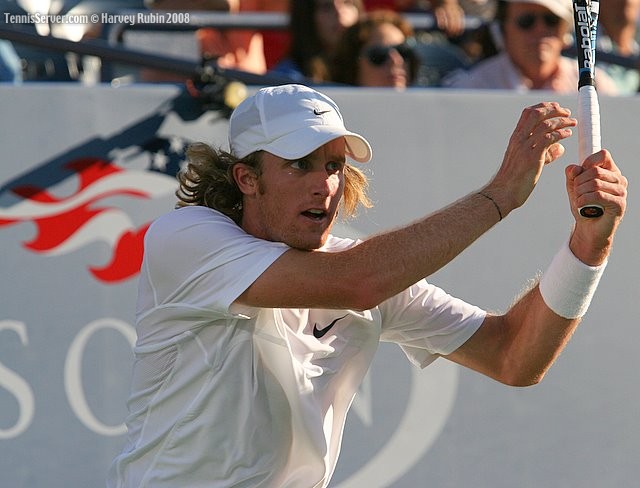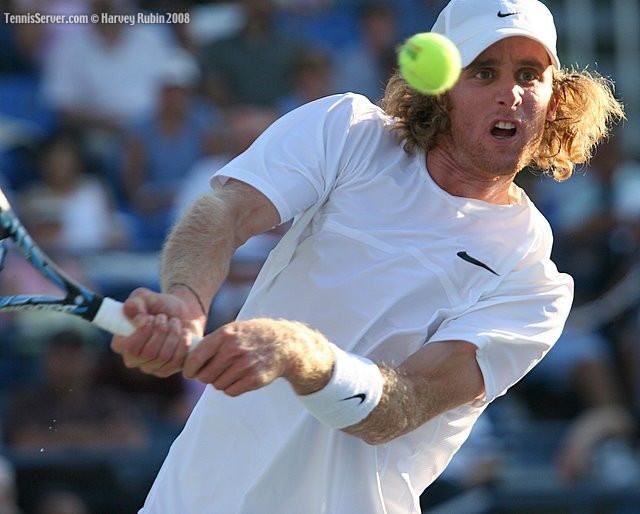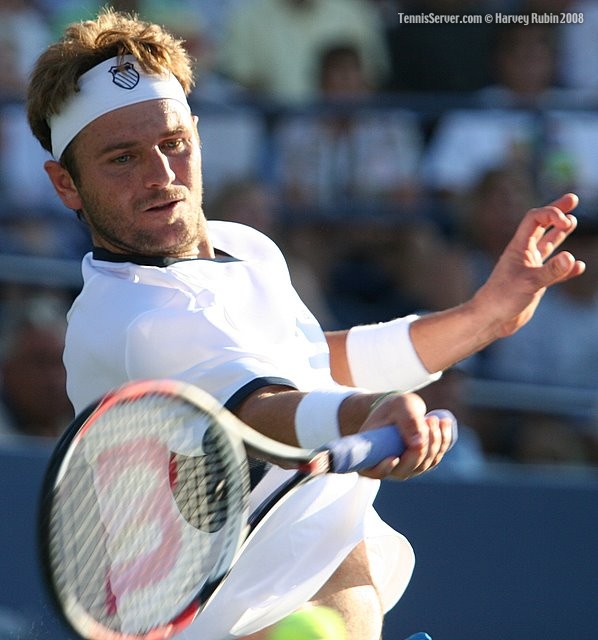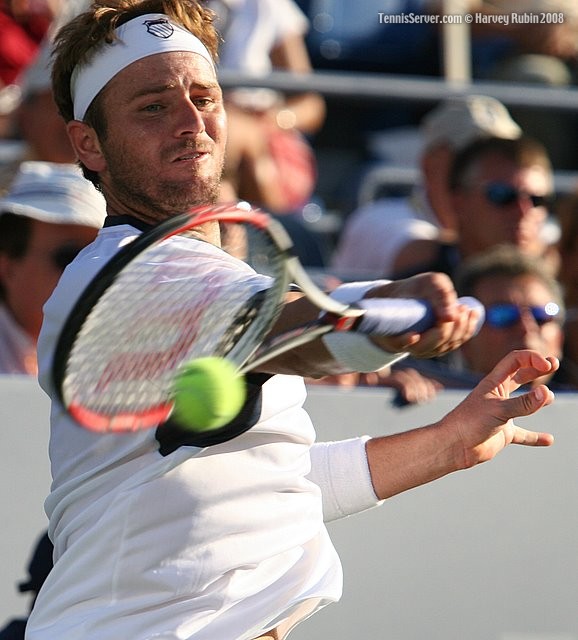Early Loses, New Stars To Come Out
August 26, 2008 -- His ATP buddies call him "Gramps." But John Isner is a young, vibrant American tennis player who has a proven NCAA record. His first year on the South African Airways ATP Tour has been less than stellar. After shooting to stardom at the 2007 Legg Mason Tennis Classic and taking a set from Roger Federer in last year's U. S. Open as a wildcard entry, John's match performance has been lukewarm according to some arm-chair critics and coaches, and probably himself -- the toughest customer of all. Yesterday at The U. S. Open he lost in the first round when soundly beaten by German qualifier Andreas Beck 7/6 (5) 6/4 7/6(3). That could only have brought more discouragement to the Georgia Bulldog. But maybe there's more than meets the eye to this loss.
"Yes, I'm trying to change some things in my game," John began, only minutes another tennis giant Ivo Karlovic defeated him in New Haven's Pilot Pen 6/7 (4) 6/3 6/4. It wasn't a shellacking by any means. The two men cracked service winners all evening; and, Karlovic -- ranked 14 in the world -- is a steep reach even for six-foot-nine-inch Isner ranked 125. But, big serves don't win tennis tournaments.
So what was an expectant star like 23 year-old John Isner to do? Tack. He had to. Loftier ranks need fresh input. Therefore, on July 31, 2008, Isner hired Kelly Jones.
Kelly Jones coaches players, and families of players, according to his web site. He believes "repeatable stroke production and clear goals" give players the "inner confidence" to "overcome all the other great competitors." Isner should be comfortable alongside Jones. He was a four-time All-American, capturing the NCAA Division 1 doubles title in 1984 and 1985 at Pepperdine University. And, John Isner is clear that his choice to complete his college education and then play professional tennis was the right one. "I don't regret the decision to complete my education," John said with conviction in New Haven.
Kelly's and John's coach-player relationship is actually John's pursuit of better and bigger tennis. They will, no doubt, work on the necessities to redevelop portions of John's game. They will add tactics and strategies that build on his strengths, one being John's huge serve. And, they will add and tone down elements that detract from his core essentials.
When a well-honed player, like John Isner, commits to changing parts of his game because the whole picture is out of focus, then problems are bound to arise. Ask someone to come to the net more frequently and take advantage of the serve and wingspan after standing on the baseline isn't going to come naturally anytime soon or without glitches. Hitting a forehand farther in front of his right hip in order to drive the ball deeper in the court with more pace isn't going to happen after a couple practice sessions. The rhythm of tennis is developed, as Kelly Jones purports, through repeatable stroke production. Get the forehand into a well-worn groove and it'll come intuitively in a match. Get comfortable coming to the net on 40% of your serves will result in winners 25% of the time for the first year, let's say. However, if perseverance is a highly regarded characteristic for John, then coming to the net on 40% of serves might just result in winners 60% of the time farther down the road.
John Isner, therefore, is in a slump because he's fine-tuning, not because he's a failing commodity. He needs more than his feared serve, and he knows it. To acknowledge problems, ask for help from one of the finest coaches out there, and relinquish control of results as he rides the learning curve, is a humbling experience. Young John Isner, in that sense, is well beyond his years. His pride has yielded to a higher goal that will take perseverance and an open-ended sense of willingness.
A few "bad" results can be expected then for John. He cannot, though, let the discouragement that could wash over him divert him from loftier heights.
Another American James Blake might well learn something from his friend Isner. Blake has been with Brian Clary for his entire tennis life. Last night at the U. S. Open Donald Young almost beat the ninth seed in five sets. A match that should have been over in three sets dragged on. And, we all know that James Blake's record in five-set matches isn't great. He's 2-10. Anything beyond the fourth set, then, is risky for the Davis Cup hero. What will it take for James Blake to bust through his apparent ceiling? Maybe a coaching change would do him good, too. If Isner can lead by example, Blake could follow in his footsteps. If both men up their tennis ante, think of the benefits for American tennis?
Who Will Breakthrough at The U. S. Open?
August 27, 2008 -- Someone will break through. On the women's side. On the men's side, too. Who they will be is a question for a ouija board or television commentators. They speculate, pairing players two or three rounds out. This projection is especially true if the Williams sisters fall in the same quarter or half of a draw, which they do this year. But for the most part players don't hypothesize. And, that's understandable. Projections would divert their attention from the task at hand -- win the match I have today.
To get through to the next round men have to win three of five sets at the U. S. Open. Women must win two of three sets. Win that match, sign courtside autographs, talk with the media, ice down, get a massage, stretch, eat, talk with the coach, and sleep. It's a concise list of to do's although the struggle to win drains the energy, rest and mental preparation accumulated from the end of the previous match.
So why does the media look forward in the draw? In part their jobs demand it. Commentators keep audiences entertained and anticipating tomorrow's entertainment -- tennis matches. They also want any spec of information that could develop into a story, which again is part of their job. But after a while, they should know that players probably wouldn't reveal much.
Here's a question Robbie Kendrick (Q) could have been asked in his press conference today, following his victory over Frenchman Nicolas Mahut 7/6 6/4 5/7 7/5. "You'll play Novak Djokovic next. You played him once on grass. How do you think you're playing? And what do you think your chances are?"
Robbie: "Well, I have a great deal of respect for Novak. He won the Australian Open this year and is the number three player in the world. I'm playing well and feel good. I'm going to go out there and play my game and see what happens. I'm just happy to get this far."
Thus, on one side of the net we have the speculators and on the other we have the realists. It may never change.
Given that stage... Seven men qualifiers have made it to the second round. Initially, sixteen earned berths in the main draw. Ryler De Heart (Q) defeated Olivier Rochus, currently ranked #68 on the South African Airways ATP Tour Rankings. That's an upset, even though Rochus isn't seeded at the Open. To keep his hopes alive, Andreas Beck (Q) defeated American John Isner. Gilles Muller (Q), the Luxembourg native who took out Andy Roddick in the first round of the 2005 U. S. Open, defeated a French wildcard Laurent Recouderc. (The French Tennis Federation will grant one American wildcard into the 2009 French Open, in exchange for Recouderc's berth here.)
What will become of these men is anyone's guess. They have, so far, played four matches to reach the second round. To watch players who settle in the rankings around 100 or 125 and, therefore, must qualify to enter ATP tour events could deepen the way fans view the early rounds at The U. S. Open.
At any time. On any day. One player could find the game, the mindset, and the mysterious element no one can put a finger on to beat the best. Top ten players believe that. Qualifiers have to believe that. However, neither is talking to the press or beyond their daily match.





 You will join 13,000 other subscribers in receiving news of updates to the Tennis Server along with monthly tennis tips from tennis pro Tom Veneziano.
You will join 13,000 other subscribers in receiving news of updates to the Tennis Server along with monthly tennis tips from tennis pro Tom Veneziano. 